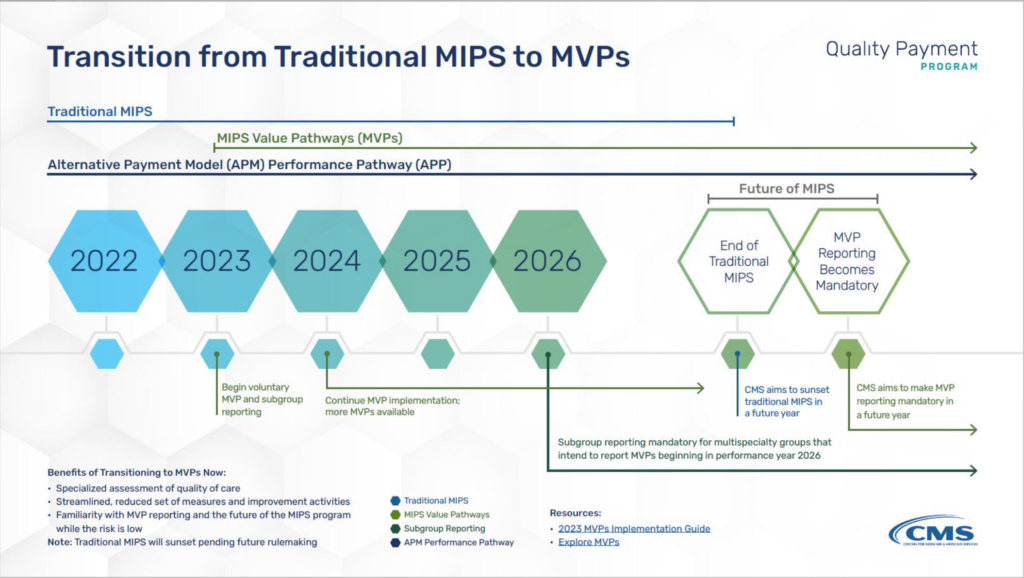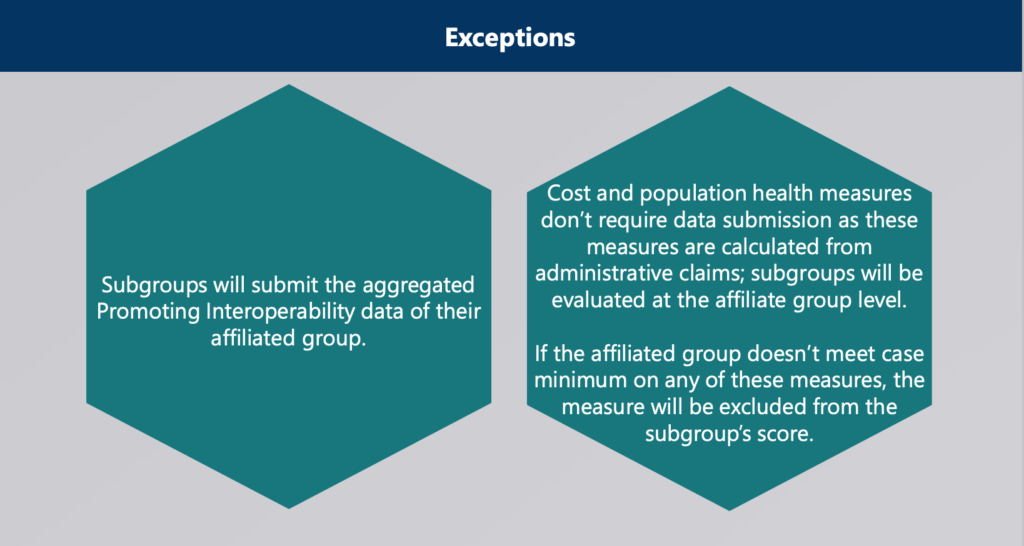MIPS eligible clinicians have three reporting options to meet the MIPS reporting requirements: Traditional MIPS, the Alternative Payment Model (APM) Performance Pathway (APP), and MIPS Value Pathways (MVPs):
- Traditional MIPS – The first reporting option where you choose and report quality measures and improvement activities, along with the full Promoting Interoperability measures, while cost performance data is handled by CMS.
- APP – a streamlined option for clinicians participating in a MIPS APM, focuses on reducing reporting burden and encouraging APM participation through a predetermined measure set and full credit in the improvement activities performance category.
- MVPs – the newest reporting option, provides a better evaluation of care quality by letting clinicians report on a smaller set of measures and improvement activities related to their specialty, while cost performance and population health data is managed by CMS.
MVPs are a voluntary reporting option that simplifies the process and improves care assessment by focusing on specialty-specific measures, leading to better health outcomes, lower costs, and helping patients make informed decisions.

Timeline:
- MVPs begin in 2023 as a voluntary reporting option.
- The number of MVPs offered will increase starting in 2024.
- Subgroup reporting for multispecialty groups that report MVPs will be mandatory in 2026.
- In the near future, traditional MIPS will sunset as a reporting option, and MVP reporting will become mandatory for all MIPS eligible clinicians.
Participation
MVPs can be reported by an MVP participant, defined as:
- An individual MIPS eligible clinician.
- Single specialty group – a group that consists of one specialty type as determined by Medicare part B claims.
- Multi-specialty group – group that consists of 2 or more specialty types.
- Subgroup
- APM Entity
MVPs and Subgroup Reporting
Subgroups are smaller teams within a larger medical practice, specializing in specific areas or conditions. In MVPs, subgroups report on tailored measures and activities, enabling more relevant performance assessment and improved patient care. Data is gathered and analyzed for the specific subgroup, with chosen quality measures reported only for that subgroup, and at least half of the clinicians participating in the improvement activities. Exceptions are as follows:

How Can I Report an MVP?
Start by reviewing the list of MVPs finalized for the 2023 performance year. MVPs include select measures and improvement activities available within the MIPS inventory that best align with a given specialty or medical condition.
Review Explore MVPs for details about the quality measures, improvement activities, and cost measures available in each MVP, along with the Promoting Interoperability measures and population health measures included in the foundational layer of every MVP.
Each MVP also identifies clinicians who practice as part of an identified specialty that may want to report that MVP. If a clinically relevant MVP isn’t available, you can still report traditional MIPS or the APP. The list of currently available MVPs is as follows:

TIP: An MVP participant can report only one MVP, but an individual clinician can participate at different levels to report multiple MVPs, like reporting as part of a group and a subgroup. MVPs can be reported alongside traditional MIPS or the APP.
HCIS’ next webinar will cover an introduction to MIPS Value Pathways. Register for the webinar here.
